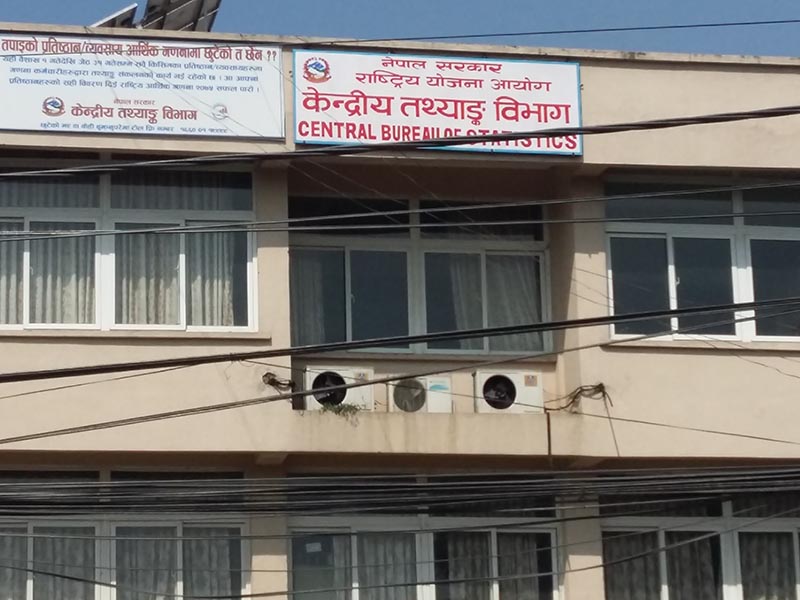CBS report brings to fore huge gender pay gap
Kathmandu, June 19
A Central Bureau of Statistics report has brought to light wide disparity between male and female workers in Nepal — women earn 29.45 per cent less than their male counterparts on an average, even if the level of education among both the genders is the same.
As per the latest Labour Force Survey prepared by the CBS, male workers in Nepal with tertiary education — education beyond the higher secondary level — earn Rs 28,341 per month on an average, while the average monthly income of female workers with the same level of education is only Rs 19,993.
The CBS report shows the gender pay gap exists at all levels of education -- from those workers who have acquired early childhood education to those that have pursued bachelor’s, master’s or doctoral degrees.
On an average, male workers who have completed bachelor’s or equivalent degree are earning Rs 25,636 per month, 29 per cent more than women with the same education level, who are earning Rs 18,200 per month. Monthly average income of male workers with master’s degree in Nepal has been recorded at Rs 32,250, while female workers with the same degree have been earning Rs 24,733 per month, 23 per cent less than male workers.
Female workers with doctorate are paid 5.7 per cent less than male workers with doctoral degree. While female workers with doctorate earn Rs 34,723 a month on average, their male counterparts with the same education earn Rs 36,831 per month, the report adds.
The CBS had prepared a Labour Force Report in 2008 as well, which showed that monthly female earning was 40.5 per cent less than what males earned at the time. However, it is the first time in 2019 that CBS has prepared a comprehensive report on domestic labour forces.
Richard Howard, director at the International Labour Organisation, Nepal, said gender pay gap, though a global issue, is comparatively higher in Nepal owing to deeply rooted discrimination between men and women in Nepali society.
According to him, the global average gender pay gap is 20 per cent, while it is almost 30 per cent in Nepal.
“Nepal should reduce the gap by strictly enforcing legal provisions that guarantee equal treatment between males and females in all fronts. The government, related organisations, society and the entire country should fight against such gender discrimination,” he said.
Critics believe that gender pay gap is the result of many factors, including occupational segregation, bias against working mothers and direct pay discrimination. A recent report prepared by Oxfam India revealed that women in India get nearly one-third or 34 per cent less wages than men. In another context, BBC’s China Editor Carrie Gracie had resigned from her post in January last year, citing pay inequality with male colleagues.
Amrita Lamsal, a feminist, believes that there is a huge gender pay gap in Nepal and across the world primarily because of the deeply rooted patriarchal spirit in society, which falsely assumes that men are physically and mentally ahead of women. “In the case of Nepal, the government has formulated a number of laws which ensure equal treatment for men and women in terms of wages. However, implementation of such policies has been weak due to patriarchal mindset,” said Lamsal.
Meanwhile, a report released by World Economic Forum last year had mentioned that there is not a single country where women are paid as much as men. Moreover, the global pay gap between men and women will take more than two centuries to close, because it is so vast and the pace of change so slow, as per the WEF report.
Bhawani Rana, president of the Federation of Nepalese Chambers of Commerce and Industry, said governments and other responsible agencies across the world should coordinate to first practically end gender inequality to address issues related to wages and other inequalities between males and females.






